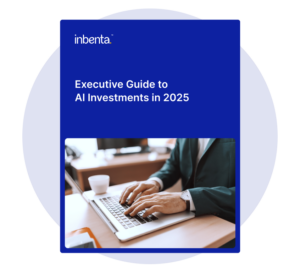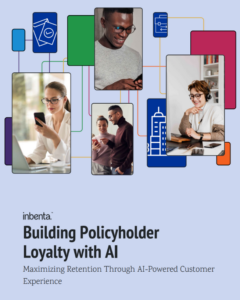Despite AI being a top-three priority for 75% of executives, only 26% of companies have successfully scaled it to realize real value. In this expert-led discussion, Inbenta strategic advisor Bobby Mehta and CEO Melissa Solis explore why AI efforts often stall — from poor planning to lack of guardrails. They emphasize the need for a clear, strategic framework focused on data, governance, and execution to fully leverage the power of Generative and Agentic AI at scale.
AI is everywhere. Fully 75% of executives now consider it among their top three priorities. However, as Inbenta strategic advisor and experienced CEO Bobby Mehta notes, the gap between their interest in the technology and their ability to implement it successfully remains vast.
“Only 26% of companies surveyed have successfully scaled their AI initiative to realize tangible value. And obviously that’s not due to want of effort.”
Only 26% of companies surveyed have successfully scaled their AI initiative to realize tangible value.
Enterprise investments in AI can reach hundreds of millions. Yet despite this financial commitment, many companies are having trouble deriving value from it.
“You’re likely seeing the end of the hype cycle and entering a phase where strategic thinking is crucial to leveraging these tools at scale,” says Mehta.
Challenges with Implementing AI
Inbenta CEO Melissa Solis points out that many companies initially jumped into AI without a thorough process. The result: failure and frustration.
“Generative AI is amazing, and Agentic agents — it’s incredible what can happen if you utilize them correctly. But when they don’t have the proper guardrails and they don’t have the proper transparency, what happens is it can really cause issues, not only from a business perspective [but] from a regulatory perspective.”
Deploying AI without the proper planning can cause friction for customers and employees. It can even harm a brand’s reputation. Successfully integrating AI takes a well-considered strategy, one that focuses on people, processes, and technology.
“AI isn’t new,” Mehta says. “The first neural net system was deployed in fraud detection over 40 years ago. What’s new is the capability of LLMs to process vast amounts of structured and unstructured data.”
A Framework for Data
So how should companies be thinking about all this?
“Enterprises need frameworks for data,” Mehta says.
A company’s data is often a massive yet underestimated asset that needs to be managed carefully. By breaking down data silos and centralizing their knowledge, in essence making their data “AI-ready,” companies can unlock real-time insights and make smarter decisions.
Companies should focus on areas that give them a competitive advantage and take the opportunity to reimagine their business model with the power of AI automation. Mehta suggests following a 70-20-10 principle:
“Leading companies allocate 70% to people and processes, 20% to technology, and 10% to algorithms.”
As well as being outward focused, business leaders need to look inward to ensure their AI initiatives are finding fertile ground. Internal adoption of any new technology, not least one as powerful as AI, requires careful messaging and planning to avoid fear and resistance from employees, as does hiring the right talent.
“These technologies hold tremendous potential,” Mehta says. “We’re on the cusp of harnessing them.”
In Brief:
- Only 26% of companies have successfully scaled AI initiatives, highlighting the need for strategic implementation.
- Successful AI integration requires a 70-20-10 approach: 70% focus on people and processes, 20% on technology, and 10% on algorithms.
- Data readiness and centralization are crucial for effective AI deployment.
- The future of AI in enterprise involves creating unified experiences that combine data and enhance user interactions.
- Companies must balance AI implementation with employee concerns to drive internal adoption and maximize AI’s potential.
Get your data AI-ready.
AI success starts with data. Break down silos, centralize knowledge, and unlock real-time insights for smarter decision-making across the organization.












